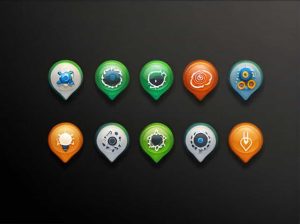Litmus paper is a simple yet effective tool used in chemistry to test whether a substance is acidic or basic. When a substance turns blue litmus paper red it indicates the presence of an acid. Acids are essential in various chemical industrial and biological processes.
In this topic we will explore the nature of acids their chemical properties and common examples of substances that turn litmus paper red. We will also discuss how acids interact with different materials and their significance in everyday life.
What Is Litmus Paper?
Litmus paper is a type of pH indicator derived from lichens. It comes in two main colors:
- Blue litmus paper (which turns red in acidic conditions).
- Red litmus paper (which turns blue in basic conditions).
Acids have a pH value less than 7 and can change the color of blue litmus paper to red. This is a quick and reliable way to determine whether a solution is acidic.
Why Do Acids Turn Litmus Paper Red?
Acids contain hydrogen ions (H⁺) which react with the dye in the litmus paper. When an acid is introduced to blue litmus paper it undergoes a chemical reaction that changes the molecular structure of the dye resulting in a red color.
The strength of the acid affects how quickly and intensely the litmus paper changes color. Strong acids such as hydrochloric acid (HCl) cause an instant and deep red color whereas weak acids like acetic acid (vinegar) may take longer to react.
Common Acids That Turn Litmus Paper Red
1. Hydrochloric Acid (HCl)
- Found in stomach acid and industrial cleaning agents.
- Strong acid with a very low pH.
- Rapidly turns blue litmus paper red.
2. Sulfuric Acid (H₂SO₄)
- Used in car batteries and industrial manufacturing.
- One of the strongest acids known.
- Highly corrosive and can damage materials upon contact.
3. Nitric Acid (HNO₃)
- Used in fertilizers explosives and chemical manufacturing.
- Highly reactive and turns litmus paper red instantly.
- Can cause severe burns on contact with the skin.
4. Acetic Acid (CH₃COOH)
- Main component of vinegar.
- A weak acid compared to mineral acids like HCl.
- Still strong enough to turn blue litmus paper red.
5. Citric Acid (C₆H₈O₇)
- Found in citrus fruits like lemons and oranges.
- Used as a food preservative and flavoring agent.
- Turns litmus paper red though less intensely than strong acids.
6. Carbonic Acid (H₂CO₃)
- Present in carbonated drinks like soda.
- Formed when carbon dioxide dissolves in water.
- Weak acid but still capable of turning blue litmus paper red.
7. Formic Acid (HCOOH)
- Found in ant and bee venom.
- Used in leather production and textile processing.
- Can cause irritation and turn litmus paper red.
Strength of Acids and Litmus Paper Reaction
Not all acids have the same effect on litmus paper. The strength of an acid is measured by its degree of ionization in water:
- Strong Acids (e.g. HCl H₂SO₄ HNO₃) fully ionize in water and cause instant color change.
- Weak Acids (e.g. acetic acid citric acid carbonic acid) partially ionize and may take longer to turn litmus paper red.
The pH value of an acid determines how intense the color change will be:
- pH 0-2 (Very strong acids) → Immediate deep red color.
- pH 3-5 (Weak acids) → Slower lighter red shade.
Real-Life Applications of Acid Testing with Litmus Paper
1. Food Industry
- Ensures the proper pH balance in food products.
- Used to test the acidity of vinegar lemon juice and soft drinks.
2. Medical Field
- Stomach acid levels can be checked using pH indicators.
- Acidity testing in urine and saliva for health diagnostics.
3. Environmental Science
- Acid rain detection through litmus paper tests.
- Testing soil acidity to ensure proper conditions for plant growth.
4. Chemical and Industrial Uses
- Quality control in chemical manufacturing.
- Ensures correct acidity levels in pharmaceuticals and cosmetics.
Acids vs. Bases: A Quick Comparison
| Property | Acids | Bases |
|---|---|---|
| Litmus Paper Reaction | Turns blue litmus red | Turns red litmus blue |
| pH Range | Less than 7 | Greater than 7 |
| Taste | Sour (e.g. vinegar lemon juice) | Bitter (e.g. baking soda soap) |
| Feel | Corrosive may cause burns | Slippery soapy texture |
| Examples | HCl H₂SO₄ CH₃COOH | NaOH NH₃ Ca(OH)₂ |
Precautions When Handling Acids
Since acids can be corrosive and harmful it is important to follow safety precautions:
- Always wear gloves and safety goggles when handling strong acids.
- Avoid direct skin contact as acids can cause burns or irritation.
- Work in a well-ventilated area to avoid inhaling acid vapors.
- Always add acid to water not the other way around to prevent splashing.
Substances that turn litmus paper red are classified as acids ranging from strong mineral acids like hydrochloric acid to weak organic acids like citric acid. The pH level determines how strongly the acid reacts with litmus paper with strong acids causing an immediate color change and weak acids reacting more slowly.
Litmus paper tests are widely used in science industry and healthcare to determine acidity levels in various substances. Understanding how acids interact with litmus paper helps in chemical identification food production environmental monitoring and medical diagnostics.
By knowing which substances turn litmus paper red we can better understand the chemical nature of acids and their role in everyday life.



